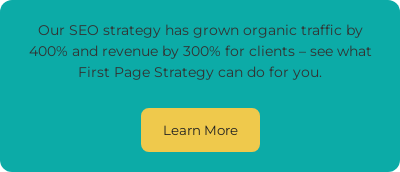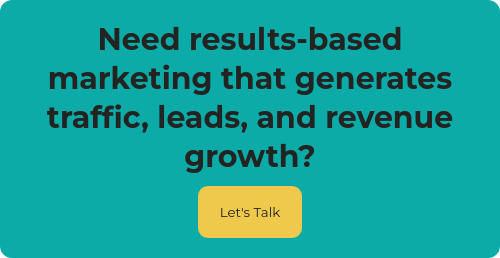Your SaaS company deserves good SEO. Yeah, we said it. While countless people and companies can benefit from your software, they have to know about it first — and that’s where SEO comes in. You don’t have to take our word for it, either. A recent content impact study found that SaaS companies that used content marketing had 30% higher growth rates than companies that didn’t.
The proof is in the sweet, sweet pudding. But even if you’re ready to take your first foray into content, the question remains: How exactly do you find SEO success as a SaaS company? (We are so glad you asked.)
Start with the following tips for kicking butt at SaaS SEO.
What Is SEO for SaaS?
Spelled out, SEO for SaaS is search engine optimization for software-as-a-service companies. But you probably already knew that.
Put tactically, SaaS SEO is the process of using SEO to strategically increase the traffic to your website by creating content that will rank high on Google’s search engine results pages (SERP) for searches your potential customers care about. But that doesn’t mean you should start creating content about dogs just because many of your prospects have one.
Though many SaaS companies see growth marketing (PPC, social ads, etc.) as their ticket to success, consider SEO the slow burn. Done right, SEO can create a strong, mutually beneficial relationship between your company and people who really need your solutions (even if they don’t know it yet).
With SEO, SaaS companies can:
- Reach people searching for your software specifically
- Reach people searching for related software, even if it’s not yours
- Read people who want to learn more about software
- Reach people who want to purchase software but haven’t settled on a solution
Want to get all those eyeballs on your product? Here’s how (because, of course, you answered yes to that question).

7 Tips to Master SEO for SaaS
1. Define Success
To achieve SaaS SEO success, you have to know what success actually means to you. Otherwise, you’re just chasing the gold at the end of the proverbial rainbow. Your goals also narrow your focus. If you know what you want to happen, you can reverse engineer the tactics it’ll take to get you there.
While it’s tempting to just rush headlong towards getting as many sign-ups as possible, pick something specific and measurable.
Your goal may be something like: Increase monthly recurring revenue (MRR) by $X over X months.
With that goal in mind, set some KPIs that you’ll track regularly. Take into account both SEO KPIs and KPIs relevant to your business.
Common SEO KPIs are:
- Rankings
- Impressions
- Traffic
- Leads/conversions
Common SaaS KPIs are:
- Marketing-qualified leads (MQLs)
- Sales-qualified leads (SQLs)
- Monthly recurring revenue
- Cost per acquisition
Every SEO tactic you take should ladder up to these KPIs. Measure on a regular basis to check your progress, but make sure you give your new SEO time to grow.
2. Develop Personas
Only 35% of SaaS companies have a central document that describes their customers. If you’re not one of them, take time to create one. And no, we’re not talking about a thin profile on “SaaS Susie.” Talk to both your marketing and sales teams to determine the psychographics — not demographics — that your most valuable customers have in common.
These could be things like:
- Personality traits
- Lifestyles
- Interests
- Attitudes and opinions
- Values
If you are among the one-third of SaaS companies that already have a buyer persona, make sure that it’s relevant to SEO. It is possible and even likely that the customer coming through Google will be a little different than the PPC customer. Identify what those differences are so you can develop content that will add value to their work and life.
3. Get Close to Your Competitors
Chances are, you know who your competitors are. But when it comes to SEO, there are two key distinctions:
- Marketplace competitors might not be your SEO competitors.
- Any site that’s ranking for terms you want to rank for is a competitor, even if they aren’t a software provider.
Let’s break that down.
There may be SaaS companies you consider massive competitors because they offer a similar product or solve a similar problem. But if they’re not pursuing SEO, they aren’t your competitor in this channel. There may also be non-SaaS sites ranking for SaaS-related terms. You guessed it; those sites are now your competitors, too.
Now, the competitor analysis begins. You can enlist a trusted partner or a comprehensive SEO tool to answer the following questions about your competitors:
- What keywords are they ranking for?
- How are they ranking for those keywords?
- What content types are they using?
- How long is the content they publish?
- How often do they publish content?
- What do I need to do to beat my competitor?
4. Curate Your Keywords
Your competitor analysis might’ve yielded a good keyword list. While that’s a solid starting point, we always recommend adding to it since there’s a good chance your competitors aren’t ranking for every single relevant keyword (and if they are, it’s really time to get cracking).
Good keywords aren’t just one or two words. In fact, shorter keywords can be the hardest to rank for, and 91.8% of search queries are actually long-tail keywords.
With that in mind, consider the following:
- Questions your prospects have
- Challenges they face
- Relevant, related topics
These are all great sources for keywords. And once you’ve built that list, it’s time to sort it.
Start by sorting your list according to where those keywords fall in the buyer’s journey. These are:
- Top-of-funnel: People searching these terms are looking for a solution, but aren’t necessarily ready to subscribe.
- Mid-funnel: Prospects at this stage know they have a problem; they know a software solution exists, but they haven’t started researching products just yet.
- Bottom-of-funnel: When people search these keyword types, they’re ready to buy and just need to be shown the way.

Within each of those groups, categorize the keywords based on their difficulty level. These are:
- Low difficulty: These are usually longer-tail, lower search volume keywords. They’re easier to rank for and may be good to target at first.
- Medium difficulty: These keywords are more competitive, but they may also be further down the funnel — a great thing when you do start to rank for them.
- High difficulty: These are short, highly-competitive keywords that are often bottom-funnel. Think of terms like “education software” or “SEO software.” Short, competitive terms can be a good fit for product pages.
5. Map Keywords to Your Website
You have your goals, your competitors, and your keywords. Think you’re ready to start slinging content? Think again.
Ranking — especially for valuable, competitive terms — is a long game. It’s about carefully mapping your keywords to your site and making strategic additions over time that both Google and your prospects will eat up.
At a high level, what you need to know is this: where the keyword falls in the funnel typically corresponds with the right piece of content for it. Blogs are generally a great fit for top-of-funnel keywords, while service/product and about pages are great for mid- and bottom-funnel keywords.

How you structure your site is equally important. High-quality blogs that rank well for less competitive yet still relevant keywords can boost rankings for pillar pages targeting more competitive terms. Essentially, you’re making a keyword map that answers this question:
Which keywords am I going to target for each section/page of my website?
6. Create Killer Content
And now the content-slinging begins. Kind of. The goal isn’t to throw any old blog at the SERP and see what sticks. It’s to create valuable, thorough content that is:
- Better than whatever your competitors publish
- Uniquely helpful to whoever is searching those terms
Use those two points as your litmus test. Any content that doesn’t meet those criteria does not pass go. Ever.
So what content should you green light? “Better” content can mean content that is:
- Longer
- More specific/in-depth
- Includes more helpful images and/or videos
- Answers additional questions your prospects have
- Easier to read
7. Optimize, Optimize, Optimize
Oh, you thought you were done once you hit “publish?” Not so fast.
Yes, true success in SaaS SEO is about creating great content. But it’s also about the tweaks, changes, and improvements you make over time. It’s turning tired old assets into shiny, new, rankable pages. It’s updating old content to keep it fresh. It’s adding to blogs as needed lest your competitors get the better of you.
You should tackle this from three different angles:
- Technical SEO: This is the practice of cleaning up any site errors. Many SEO tools can audit this, but, generally, you want to make sure links/buttons work, pages are indexed and marked up, and you’re creating a bug-free user experience.
- On-Page SEO: This is making improvements to the content itself. It might be ensuring that you have proper headings and that the content is easy to read, but it might also mean adding depth to the content itself to boost your rankings.
- Off-Page SEO: These are activities that happen outside of your website but can still impact your SEO success. Think backlinking, driving branded searches, and increasing social media engagement.
SaaS SEO Success Is Simple, Not Easy
The seven steps above will get you well on your way to SEO victory. But the truth is that they’re just a start. Google’s algorithms are always evolving, which means SEO best practices are always changing. While developing a strategy and creating content can be simple, it’s rarely ever easy.
Whether you go it alone or enlist a partner, prepare to wait. It’ll take some time to gain SEO momentum. But once you do, it’s traffic that’ll just keep coming all on its own. Can you say “best pipeline ever?”
If you do want some support, our team at First Page Strategy can guide you every step of the way. Contact us to talk about implementing SaaS SEO.







